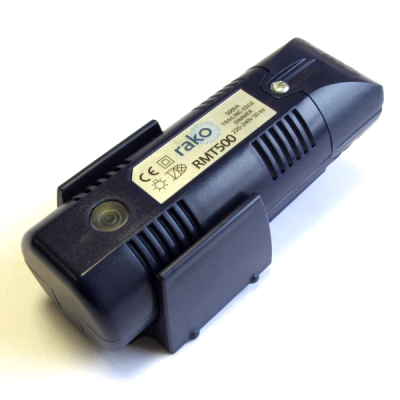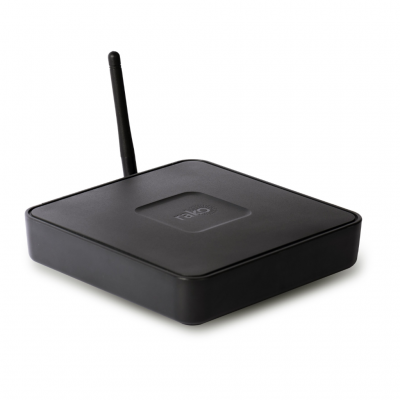Residential lighting plays a significant role in improving the ambiance of our living spaces, enhancing functionality and ensuring safety. With the advancement of technology, lighting design software has become an indispensable tool for designers, architects, and homeowners alike. In the UK, especially, numerous design software applications cater to residential lighting design needs, making the process efficient, cost-effective, and visually appealing.
Understanding Residential Lighting Design Software
Residential lighting design software is a digital tool that enables users to plan, visualize, and analyze the illumination requirements of residential spaces. These applications consider various factors such as natural light sources, types of artificial light, and the overall aesthetic of the space to create well-lit and comfortable environments.
Lighting design software can help streamline the design process by allowing users to:
- Visualize their designs in 3D, enabling better understanding and communication of ideas
- Perform accurate calculations to determine the optimal placement and intensity of light sources
- Simultaneously experiment with different lighting schemes and fixtures
- Reduce the time and costs associated with trial-and-error methods
- Produce professional and well-structured documentation for clients and contractors
AutoLUX: An Intelligent Lighting Design Software
AutoLUX is an innovative software application that focuses on automating the lighting design process. It is suitable for both indoor and outdoor residential lighting applications and offers a user-friendly interface that requires minimal technical knowledge. With its intelligent algorithms, AutoLUX can present optimized lighting designs in minutes, making it an ideal choice for time-sensitive projects.
Lighting Reality: Software for Exterior Lighting Design
Specialising in exterior lighting design, Lighting Reality offers a quick and efficient solution for professionals working on residential projects in the UK. The software boasts an extensive library of UK-specific lighting products and supports essential British design standards. Its advanced features allow designers to create realistic photometric calculations and visual representations of outdoor lighting installations.
ChalmLite 6.0: Lighting Design for Harsh and Hazardous Industry
ChalmLite is a versatile lighting design software that not only caters to typical residential projects but also excels in designing lighting solutions for harsh and hazardous environments. It combines simplicity with accuracy, helping designers create safe and efficient lighting schemes for locations such as basements, garages, and outdoor areas with challenging conditions.
Easy Design-in Tool by Philips: Quick and Optimal LED Solutions
Philips, a leading name in the lighting industry, offers its Easy Design-in Tool as a reliable software solution that focuses on LED lighting designs. This application provides an extensive database of Philips lighting products and enables designers to select the most suitable components for their projects effortlessly. On top of that, it generates detailed reports and layout presentations, simplifying the design process.
Dialight: Lighting Layout Software with 3D Rendering
Dialight's lighting layout software is an ideal choice for professionals looking for a comprehensive tool that offers advanced 3D rendering capabilities. With its user-friendly interface and extensive luminaire library, designers can create accurate and visually appealing presentations to showcase their residential lighting designs. This software also includes energy analysis and payback estimation features, enabling users to make informed decisions regarding their lighting choices.
Features of Residential Lighting Design Software
One of the most crucial aspects of lighting design is the ability to visualize how illumination will affect the overall aesthetic of a space. Modern residential lighting design software applications offer 3D rendering capabilities, providing users with lifelike visualizations that accurately represent the impact of their design choices.
Accurate lighting calculations are essential for creating optimal and efficient lighting designs. Residential lighting design software can perform complex calculations, such as determining the necessary luminous flux or the optimal placement of light sources, streamlining the design process and ensuring that spaces are well-lit and comfortable.
To enhance the workflow of lighting professionals, residential lighting design software applications often integrate with popular Computer-Aided Design (CAD) and Building Information Modeling (BIM) tools such as AutoCAD and REVIT. This integration allows designers to import existing plans and architectural drawings, ensuring a seamless design process that minimises errors and reduces time spent on manual tasks.
Some software applications also provide features for designing and decorating interior spaces. By incorporating these features, users can create cohesive designs that consider not only lighting but also the overall look and feel of residential spaces, ensuring a holistic approach to interior design.
Choosing the Right Lighting Design Software
When selecting a residential lighting design software, users should consider the following:
- User-friendliness: A software application should offer an easy-to-navigate interface that does not require extensive technical knowledge.
- Functionality: The software should support a comprehensive range of features that cater to the specific needs of residential lighting design projects.
- Compatibility: Integration with popular CAD and BIM tools is essential to streamline the design process and reduce the likelihood of errors.
- Library of products: An extensive database of lighting products, especially those specific to the UK market, can facilitate seamless and informed decision-making.
- Pricing: The software should be cost-effective and provide good value for money.
Comparing Different Software Options
To ensure the best choice is made, it is essential to compare different software applications based on:
- User reviews and testimonials, which provide valuable insights on the software's reliability and effectiveness
- A list of features, capabilities, and limitations, ensuring the selected software caters to the specific needs of a residential lighting design project
- Ease of use, determining whether the software’s interface is user-friendly and easy to understand
- Compatibility with existing design tools, such as CAD and BIM platforms, to ensure a smooth workflow
- Pricing and customer support, gauging whether the cost of the software aligns with the budget and if dedicated customer support is available
Successful Residential Lighting Projects in the UK
There have been numerous successful residential lighting design projects across the UK where software applications have played a critical role. These projects range from single-room redesigns, featuring innovative lighting solutions, to large-scale projects such as new housing developments and high-end residential properties.
In these cases, residential lighting design software has streamlined the design process by:
- Enabling designers to create accurate 3D visualisations of their designs
- Providing essential calculations and analyses to ensure optimal lighting conditions
- Allowing for rapid experimentation and comparison of different design scenarios
- Facilitating seamless collaboration between designers, architects, and contractors
- Simplifying the documentation process and ensuring accurate project records
Future Trends in Residential Lighting Design Software
As technology continues to advance, residential lighting design software applications are set to benefit from emerging innovations. Augmented Reality (AR) and Virtual Reality (VR) technologies are expected to play a more significant role in the visualisation process, providing immersive and interactive experiences that enable users to better understand and evaluate their designs.
Furthermore, the incorporation of Artificial Intelligence (AI) and Machine Learning algorithms into residential lighting design software will enable users to benefit from intelligent automation and analytical capabilities. This advancement will simplify design processes further and lead to the creation of more energy-efficient and visually appealing lighting solutions.
Conclusion
In conclusion, residential lighting design software in the UK has become an integral part of the design process, providing numerous benefits and ensuring efficient, cost-effective, and visually appealing lighting solutions. With continuous advancements in technology and the increasing adoption of AI and Machine Learning, the future of residential lighting design software looks promising, aiming to simplify the process even further and help create stunning and comfortable living spaces.
Lighting Controls and their Impact on Mood
An essential aspect of residential lighting design is the ability to create different moods and adapt to the various needs of occupants. Lighting controls play a critical role in achieving this, as they enable users to fine-tune their spaces to create the desired ambience. This is particularly important in multi-functional areas where lighting requirements might change throughout the day or depending on the activity taking place.
Light Dimming
One of the most popular lighting control features is light dimming, which allows users to adjust the intensity of light sources in a space. Dimming can help create a warm, cosy atmosphere during quiet evenings or a bright, energising environment for active days. The versatility of dimmable lighting can cater to different preferences and moods, providing a personalised living experience.
Many residential lighting design software applications offer tools for designing spaces with dimmable lighting, catering to this popular demand. By incorporating dimming capabilities, designers can create flexible and adaptive lighting solutions to meet the ever-changing needs of their clients.
Lighting App Control
As homeowners become more tech-savvy and increasingly seek smart home solutions, lighting app control has emerged as a popular option for managing residential lighting systems. This technology allows users to control and adjust their lighting settings using their smartphones or tablets, either remotely or within the home.
Lighting app control enables users to:
- Turn lights on and off or adjust their intensity
- Programme custom lighting schedules that cater to their daily routines
- Create pre-set mood settings for different occasions, activities, or times of day
- Control colour-changing or tunable white lighting to personalise the environment further
- Monitor and manage energy consumption, promoting energy efficiency and sustainability
Residential lighting design software applications that support smart home integration can significantly benefit from catering to this demand. Designers can use such software to create tailored, technology-driven solutions for their clients while ensuring compatibility with popular home automation systems.
In conclusion, integrating lighting controls like light dimming and app control has a significant impact on mood and personalisation in residential spaces. As the demand for smart, adaptive lighting solutions continues to grow, it is crucial that design software applications stay ahead of the curve, incorporating features that cater to cutting-edge trends and modern lifestyle requirements. This approach will ensure that designers can create future-proof, customised, and mood-enhancing lighting experiences for their clients.
FAQs
What are the benefits of using residential lighting design software?
Residential lighting design software streamlines the design process by providing 3D visualisations, accurate lighting calculations, the ability to experiment with different lighting schemes, reducing time and costs associated with trial-and-error methods, and generating professional documentation.
How does residential lighting design software assist with creating mood lighting?
Many residential lighting design software applications offer features that help designers incorporate lighting controls such as light dimming and colour adjustment capabilities. These features enable the creation of mood lighting to suit different preferences, occasions, and activities within residential spaces.
What factors should be considered when selecting a lighting design software for residential projects?
Factors to consider when selecting a lighting design software include user-friendliness, functionality, compatibility with CAD and BIM tools, a comprehensive library of lighting products, and cost-effectiveness.
How do lighting app controls contribute to smart residential lighting design?
Lighting app controls enable users to manage and adjust lighting settings using smartphones or tablets, allowing for personalised and adaptive lighting solutions. Lighting design software that supports smart home integration can help designers create technology-driven solutions that meet the demands of modern homeowners.
How are technological advancements such as AI shaping the future of residential lighting design software?
The incorporation of AI and machine learning algorithms in residential lighting design software enables intelligent automation and analytics capabilities that simplify the design process and lead to more energy-efficient and visually appealing lighting solutions. Emerging technologies like AR and VR are also expected to play a significant role in visualisation and presentation.

Rako Lighting Controls Systems

Rako Keypads

Rako Dimmers

